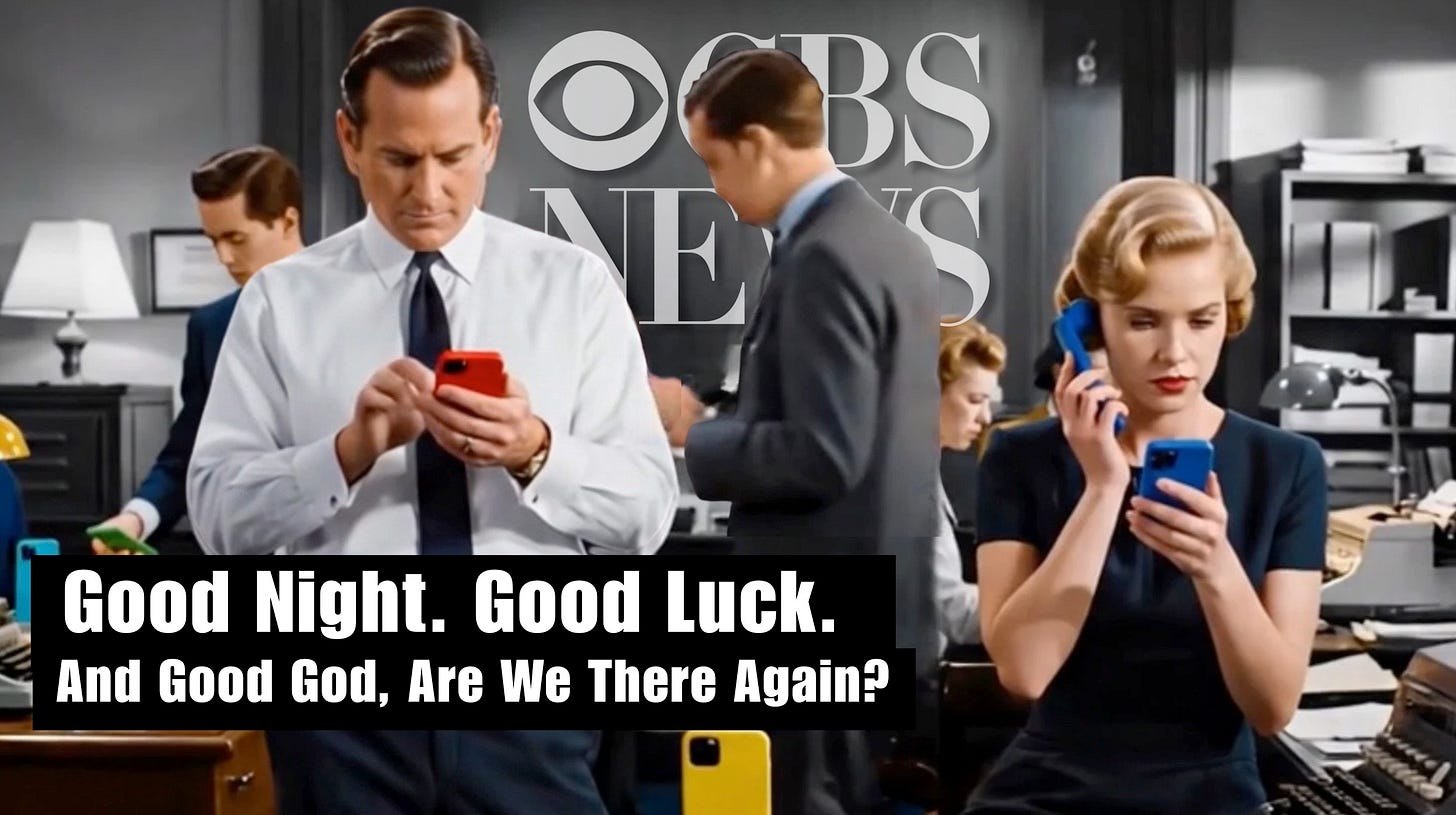Let’s talk about Good Night, and Good Luck. Let’s talk about George Clooney—the actor, the director, the political force. Let’s talk about the black-and-white clarity of that film, shot in smoky shadows and silences, and the sharp moral edges it dared to restore to journalism.
But mostly, let’s talk about Edward R. Murrow. About the moment he looked into the lens and didn’t blink. About the time journalism stood up to a demagogue—and won.
Sort of.
The film, which premiered in 2005, tells the story of Murrow’s showdown with Senator Joseph McCarthy, the Wisconsin architect of the Red Scare. McCarthy weaponized fear, used the media as a bludgeon, and destroyed lives under the false banner of patriotism. Murrow, with quiet gravity, exposed the lies. It was a cinematic and historical victory for truth.
But watching Good Night, and Good Luck on Broadway today feels different. The victory no longer feels permanent. It feels borrowed. Fragile. Conditional. As if the credits rolled too early.
Because we are back in that moment. Or something worse.
(Created by Veo3)
Who’s today’s Joe McCarthy? That question is harder than it should be. Is it Donald Trump, who weaponizes grievance with theatrical brutality? Is it Elon Musk, who cloaks authoritarian tendencies in techno-utopian babble and irony-poisoned memes? Or is it someone more strategic, more insidious—Steve Miller, the ghostwriter of white nationalism with a law degree and a long memory?
Maybe it doesn’t matter which name you choose. What matters is that the tactics are familiar. Intimidation. Spectacle. Disinformation. Fear. What matters is that journalism, once again, is being asked to take a side—and too often, it chooses the pose of neutrality over the weight of truth.
What Good Night, and Good Luck does so well is remind us that Murrow didn’t just deliver the news. He delivered judgment. He understood that the goal of journalism isn’t to be liked, or retweeted, or even believed. It’s to bear witness. To look power in the eye and say: “No.”
The film ends with Murrow’s prophetic words: “This instrument can teach, it can illuminate; yes, and even inspire. But it can do so only to the extent that humans are determined to use it to those ends. Otherwise, it is nothing but wires and lights in a box.”
If that doesn’t describe our current moment, I don’t know what does.
Because the “instrument” today is no longer the cathode-ray tube. It’s the algorithm. The feed. The network of endless, contextless posts. It’s TikTok. It’s X. It’s Threads. It’s the junk drawer of digital life. And increasingly, it’s the place where propaganda lives and multiplies.
What Clooney understood, what Murrow warned, is that technology has no moral compass. It reflects the values of those who wield it. And today, the people with the biggest megaphones are not journalists. They are billionaires with agendas. They are fascists with filters. They are anonymous accounts with swarms of followers and no accountability.
You may have missed it, but when CNN aired Good Night, and Good Luck recently, the closing shot was altered. The final image was no longer a freeze-frame of Murrow’s broadcast. Instead, it ended with a haunting insertion: Elon Musk—digitally rendered, arm raised in what resembled a Nazi salute.
This wasn’t an error. It was deliberate.
And CNN aired it.
And almost no one said a word.
That’s the part that should stop us cold. Not the image itself, but the fact that it was allowed to stand. That no one at the network screamed. That the audience just kept watching. That we’ve grown so used to the distortion that we don’t notice the bending anymore.
If Murrow had watched that ending, he wouldn’t have been shocked. He would have been devastated. Because this isn’t just about Musk or Trump or McCarthy or Miller. It’s about what we expect journalism to do. What we expect ourselves to do when confronted with the lie.
We tell ourselves that things were worse back then. That McCarthyism was a fever that broke. That sanity won. But look closer: it was Murrow who lost his show. It was CBS who got scared. It was the networks who caved. McCarthy’s name faded, yes—but the tools he forged have been polished and handed down.
So let’s not lie to ourselves. Let’s not treat Good Night, and Good Luck as history. It’s a mirror. And we’re staring into it.
Clooney didn’t bring Murrow to Broadway to pat journalists on the back. He made it to ask them one question: Are you ready to do it again?
Because the lights and wires in the box don’t know what they’re transmitting. It’s up to us to decide.
And if we don’t?
Good night. And good luck.
###
Link - lights and wires in a box clip - HERE




